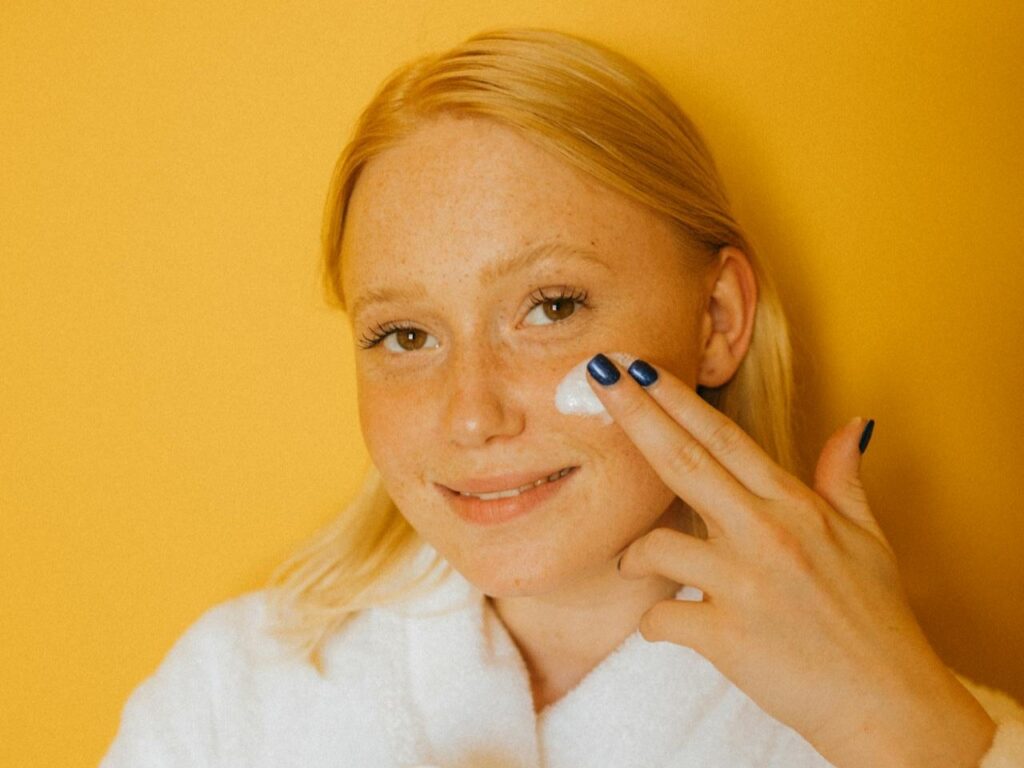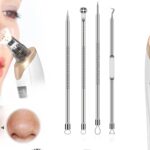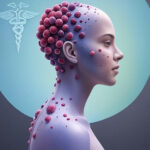Cystic acne represents the most severe and challenging form of inflammatory acne, affecting millions of people worldwide. Unlike typical breakouts, cystic acne creates deep, painful lesions that can cause lasting physical and emotional scars. If you’re struggling with this condition, understanding its causes, treatment options, and long-term management strategies is crucial for achieving clearer skin and improved quality of life.
What Is Cystic Acne?
Cystic acne is a severe type of inflammatory acne characterized by large, painful, pus-filled lesions that develop deep beneath the skin’s surface. These cysts form when oil and dead skin cells clog hair follicles, creating an ideal environment for bacterial growth and inflammation.
Unlike regular pimples that appear on the skin’s surface, acne cysts develop in the deeper layers of skin tissue. They typically measure between the size of a pea and a dime, appearing as red, swollen bumps that are tender to the touch. The inflammation extends deep into the dermis, making these lesions particularly painful and prone to scarring.
Key Characteristics of Cystic Acne:
- Large, inflamed nodules beneath the skin
- Painful and tender to touch
- Filled with pus or fluid
- Red or purple in appearance
- Can persist for weeks or months
- High risk of permanent scarring
Understanding the Difference: Cystic Acne vs. Acne Nodules
While both cystic acne and nodular acne are severe forms of inflammatory acne, they have distinct characteristics:
Cystic Acne:
- Contains pus or fluid
- Softer to the touch
- More likely to rupture
- Higher infection risk
Nodular Acne:
- Solid, hard lumps
- No pus content
- Firmer texture
- Less likely to rupture
Both conditions require professional dermatological treatment and can cause significant scarring if left untreated.
What Causes Cystic Acne?
Understanding the root causes of cystic acne is essential for effective treatment. Multiple factors contribute to its development:
Hormonal Factors
Androgens, particularly testosterone, play a primary role in cystic acne development. These hormones stimulate sebaceous glands to produce excess oil (sebum), creating conditions favorable for bacterial growth and inflammation.
Common hormonal triggers include:
- Puberty and adolescence
- Menstrual cycles
- Pregnancy
- Polycystic ovary syndrome (PCOS)
- Hormonal contraceptive changes
Genetic Predisposition
Family history significantly influences cystic acne risk. If your parents or siblings experienced severe acne, you’re more likely to develop similar conditions.
Bacterial Infection
Propionibacterium acnes (P. acnes) bacteria naturally live on the skin but can multiply rapidly in clogged pores, triggering inflammatory responses that lead to cystic lesions.
Environmental and Lifestyle Factors
- High humidity environments
- Tight-fitting clothing or equipment
- Certain medications (corticosteroids, lithium)
- Stress and lack of sleep
- Dietary factors (emerging research suggests potential links)
Recognizing Cystic Acne Symptoms and Appearance
Cystic acne presents with distinctive characteristics that differentiate it from other acne types:
Physical Symptoms:
- Deep, painful lumps under the skin
- Red or purple discoloration
- Swelling and inflammation
- Pus-filled centers (may not be visible on surface)
- Tender or painful to touch
- Slow healing process
Common Locations:
- Face: Cheeks, jawline, chin, and forehead
- Back and shoulders: Upper back and shoulder blades
- Chest: Upper chest area
- Neck: Particularly along the hairline
- Upper arms: Less common but possible
The Psychological Impact of Cystic Acne
Beyond physical symptoms, cystic acne significantly affects mental health and quality of life. Research shows strong correlations between severe acne and:
- Depression and anxiety
- Low self-esteem
- Social withdrawal
- Academic or work performance issues
- Relationship difficulties
Recognizing these psychological impacts is crucial for comprehensive treatment approaches that address both physical and emotional well-being.
Comprehensive Treatment Options for Cystic Acne
Effective cystic acne treatment typically requires a multi-faceted approach combining professional medical intervention with consistent skincare practices.
Topical Medications
Prescription Retinoids:
- Tretinoin, adapalene, and tazarotene
- Promote cell turnover and prevent clogged pores
- Reduce inflammation and comedone formation
- Require 12-16 weeks for visible results
Topical Antibiotics:
- Clindamycin and erythromycin
- Target bacterial infections
- Often combined with benzoyl peroxide
- Help reduce inflammation
Benzoyl Peroxide:
- Antimicrobial properties
- Available in 2.5%, 5%, and 10% concentrations
- Can cause dryness and irritation initially
- Effective when combined with other treatments
Oral Medications
Oral Antibiotics:
- Doxycycline, minocycline, and tetracycline
- Reduce bacterial growth and inflammation
- Typically prescribed for 3-6 months
- May cause gastrointestinal side effects
Hormonal Treatments:
- Birth control pills (for women)
- Spironolactone (anti-androgen)
- Effective for hormonally-driven acne
- Require ongoing use for continued benefits
Isotretinoin (Accutane):
- Most effective treatment for severe cystic acne
- Reduces oil production by 80-90%
- Requires careful monitoring due to side effects
- Provides long-term remission in many cases
Professional Therapies
Corticosteroid Injections:
- Direct injection into cystic lesions
- Rapid reduction in inflammation and pain
- Immediate relief for severe cysts
- Risk of skin atrophy with repeated use
Light and Laser Therapies:
- Blue light therapy targets P. acnes bacteria
- Photodynamic therapy combines light with photosensitizing agents
- Laser treatments reduce inflammation and promote healing
Chemical Peels:
- Salicylic acid and glycolic acid peels
- Remove dead skin cells and unclog pores
- Improve skin texture and reduce scarring
- Require multiple sessions for optimal results
Treatment Timeline and Realistic Expectations
Understanding treatment timelines helps set realistic expectations:
Weeks 1-4: Initial adjustment period, possible temporary worsening
Weeks 4-8: Gradual improvement begins, reduced inflammation
Weeks 8-16: Significant improvement, fewer new lesions
Months 4-6: Optimal results achieved with consistent treatment
Most patients require 3-6 months of consistent treatment to see substantial improvement. Patience and adherence to prescribed regimens are essential for success.
Dietary Considerations and Emerging Research
While the relationship between diet and acne remains debated, emerging research suggests potential connections:
Foods that may worsen acne:
- High-glycemic foods (white bread, sugary snacks)
- Dairy products (particularly skim milk)
- Foods high in omega-6 fatty acids
Potentially beneficial dietary choices:
- Low-glycemic foods
- Omega-3 rich foods (fish, walnuts)
- Antioxidant-rich fruits and vegetables
- Zinc-rich foods (pumpkin seeds, legumes)
Prevention Strategies and Lifestyle Modifications
Preventing cystic acne involves consistent skincare practices and lifestyle adjustments:
Skincare Best Practices:
- Use gentle, non-comedogenic cleansers
- Avoid over-washing or harsh scrubbing
- Apply oil-free moisturizers
- Use broad-spectrum sunscreen daily
- Never pick or squeeze cystic lesions
Lifestyle Modifications:
- Manage stress through exercise, meditation, or therapy
- Maintain consistent sleep schedules
- Change pillowcases and towels regularly
- Avoid tight-fitting clothing over affected areas
- Clean phones and other items that touch your face
Managing Acne Scars and Long-term Complications
Cystic acne often leads to permanent scarring, making early intervention crucial. Common scar types include:
- Ice pick scars: Deep, narrow indentations
- Boxcar scars: Wider, rectangular depressions
- Rolling scars: Wave-like indentations
Scar treatment options:
- Microneedling
- Laser resurfacing
- Chemical peels
- Dermal fillers
- Subcision procedures
When to See a Dermatologist
Seek professional help if you experience:
- Painful, deep cystic lesions
- Acne that doesn’t respond to over-the-counter treatments
- Signs of scarring or post-inflammatory hyperpigmentation
- Emotional distress related to acne
- Family history of severe acne
Early intervention significantly improves treatment outcomes and reduces scarring risk.
Insurance Coverage and Treatment Costs
Many insurance plans cover medically necessary acne treatments, including:
- Dermatologist consultations
- Prescription medications
- Some professional procedures
Cost-saving strategies:
- Generic medication options
- Patient assistance programs
- Combination therapy approaches
- Preventive care to avoid complications
The Role of Mental Health Support
Comprehensive cystic acne treatment should address psychological well-being:
- Consider counseling or therapy
- Join support groups or online communities
- Practice stress-reduction techniques
- Communicate openly with healthcare providers about emotional impacts
Frequently Asked Questions
Q: How long does it take for cystic acne to heal?
A: Individual cysts can take 2-8 weeks to heal, while overall improvement typically requires 3-6 months of consistent treatment.
Q: Can cystic acne be cured permanently?
A: While there’s no permanent “cure,” many people achieve long-term remission with proper treatment, particularly with isotretinoin therapy.
Q: Is cystic acne contagious?
A: No, cystic acne is not contagious. It results from internal factors like hormones and genetics, not external transmission.
Q: Can adults develop cystic acne?
A: Yes, adult-onset cystic acne is increasingly common, particularly in women due to hormonal fluctuations.
Q: Should I pop or drain cystic acne?
A: Never attempt to pop or drain cystic acne yourself. This can worsen inflammation, cause scarring, and lead to infection.
Take Action: Your Path to Clearer Skin
Cystic acne is a challenging but treatable condition. The key to success lies in early intervention, consistent treatment, and patience with the healing process. Don’t let severe acne control your life – professional help is available, and effective treatments can restore both your skin’s health and your confidence.
If you’re struggling with cystic acne, schedule a consultation with a board-certified dermatologist today. With the right treatment plan and support system, you can achieve clearer skin and improved quality of life. Remember, you’re not alone in this journey, and help is available to guide you toward healthier, happier skin.



